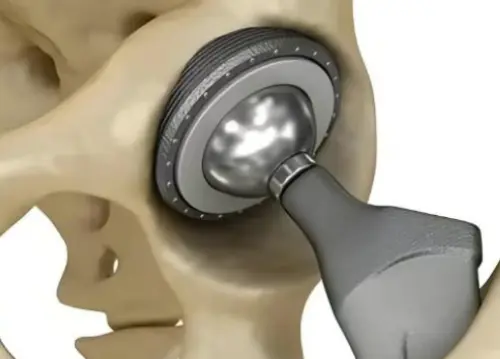With the advancement of modern science and technology, the application of metal materials continues to expand. Among them, titanium alloy, leveraging its unique advantages, has successfully crossed over from the aviation field to the medical industry, becoming an essential material for safeguarding human health.

An Unexpected Crossover from Fighter Planes to the Human Body
Titanium alloy was initially used primarily in the aviation field, serving as a key material in the manufacture of advanced aircraft such as fighter jets. In the 1940s, a seemingly ordinary scientific experiment unexpectedly opened the way for titanium alloy's medical applications. At the time, scientists implanted a piece of titanium alloy into an animal, initially with an exploratory mindset, but unexpectedly made a surprising discovery: titanium alloy and animal bone were perfectly compatible, as if the two had a natural affinity.
This discovery quickly caused a sensation in the scientific community, ushering in new hope for titanium alloy's medical applications. By the 1950s, after a series of research and testing, titanium alloy officially entered the medical field, embarking on a new journey in safeguarding human health. The early Ti-6Al-4V alloy became a leading alloy of its time, widely used in various medical fields, including orthopedics and dentistry, for the production of orthopedic fixation devices and dental implants.
However, as medical research deepened, doctors discovered that the vanadium element in Ti-6Al-4V alloy could pose potential risks, potentially adversely affecting human health. This discovery spurred materials scientists to actively optimize and improve the composition of titanium alloys. Through tireless efforts, they replaced vanadium with niobium, creating the new Ti-6Al-7Nb alloy. This improved titanium alloy not only offers enhanced biocompatibility but also boasts further improved performance, providing strong support for its wider application in the medical field.
The Diverse Titanium Alloy Family
After years of development, the titanium alloy family has developed a variety of different types with diverse properties to meet the diverse needs of the medical field.
Stable and Applicable Types
These titanium alloys possess stable chemical properties, remaining relatively stable in the human body and resistant to chemical reactions with other substances. Although its strength is relatively modest, it excels in medical applications requiring low mechanical properties but long-term stability. For example, it can reliably stabilize fractures in non-load-bearing areas, providing a stable environment for bone healing and aiding smooth recovery.
Flexible and Conformable Titanium Alloy
The elasticity of flexible and conformable titanium alloys is similar to that of human bone, allowing them to adapt better to surrounding tissues after implantation. This characteristic is particularly evident in dental implants. Dental implants made from flexible and conformable titanium alloys more naturally mimic the elasticity of natural tooth roots, better distributing force during chewing and reducing pressure on the surrounding alveolar bone. This facilitates osseointegration, improves implant success rates, and enhances long-term performance. Furthermore, in certain joint repair surgeries, it can help patients restore more natural joint movement.
High-Strength and Versatile Titanium Alloy
High-Strength and Versatile Titanium Alloys are considered the "all-rounder" of the titanium alloy family, combining high strength, high toughness, and excellent corrosion resistance. In the manufacture of heart stents, this titanium alloy can withstand the immense pressure and frequent friction generated by a beating heart, maintaining its shape and function, and ensuring unobstructed blood vessels. In orthopedic surgery, for joints subject to significant mechanical loads, such as the hip and knee, joint prostheses made from high-strength, versatile titanium alloys provide reliable support, allowing patients to regain mobility and improve their quality of life.
A "Delicate Coexistence" with the Human Immune System
Despite its impressive medical performance, titanium alloy is, after all, a foreign substance, recognized and monitored by the human immune system. So, how does titanium alloy achieve such a "peaceful coexistence" with the human immune system?
It turns out that an ultra-thin oxide film quickly forms on the surface of the titanium alloy. This oxide film acts as a protective shield, partially preventing direct contact between the titanium alloy and human tissue, reducing immune system stimulation. Furthermore, the titanium alloy itself exhibits excellent biocompatibility and does not actively trigger a strong immune response. Once the immune system recognizes this oxide film, it perceives it as relatively "safe" and does not overly attack it. In this way, titanium alloys and the human immune system have achieved a delicate balance, enabling long-term coexistence.
However, this balance is not stable. If the oxide film becomes damaged due to wear, aging, or other factors, it may trigger an immune response. However, current research shows that under normal use, the probability of this occurring is low, and through appropriate material design and process improvements, the stability and durability of the oxide film can be further improved.
Titanium alloy's journey from aviation to medicine is a successful example of the integration of technological development and medical needs. Its widespread application in the medical field has provided patients with more treatment options and better outcomes. With the continuous advancement of materials science and medical technology, we believe that titanium alloys will play an even greater role in the future and make greater contributions to human health.











